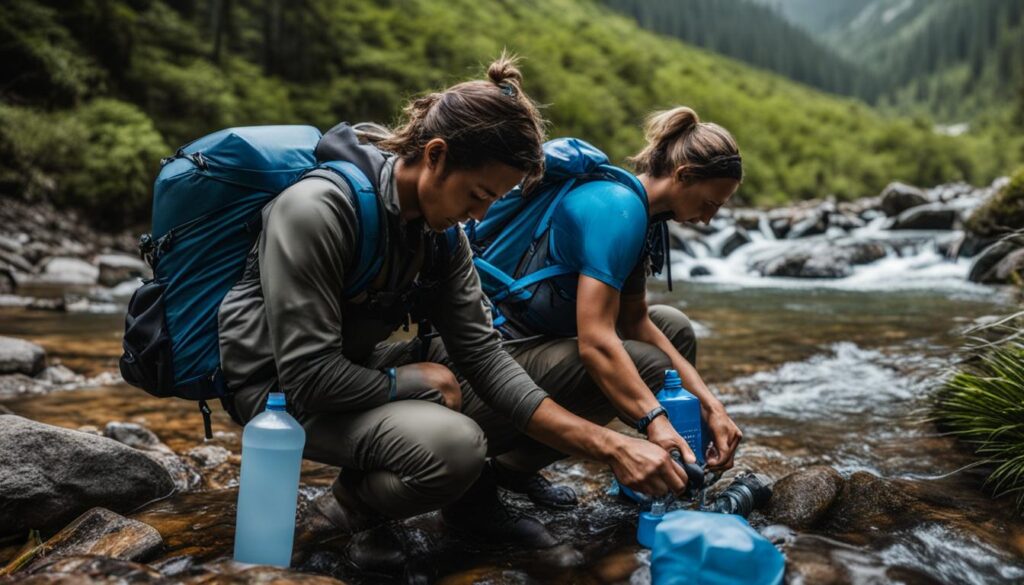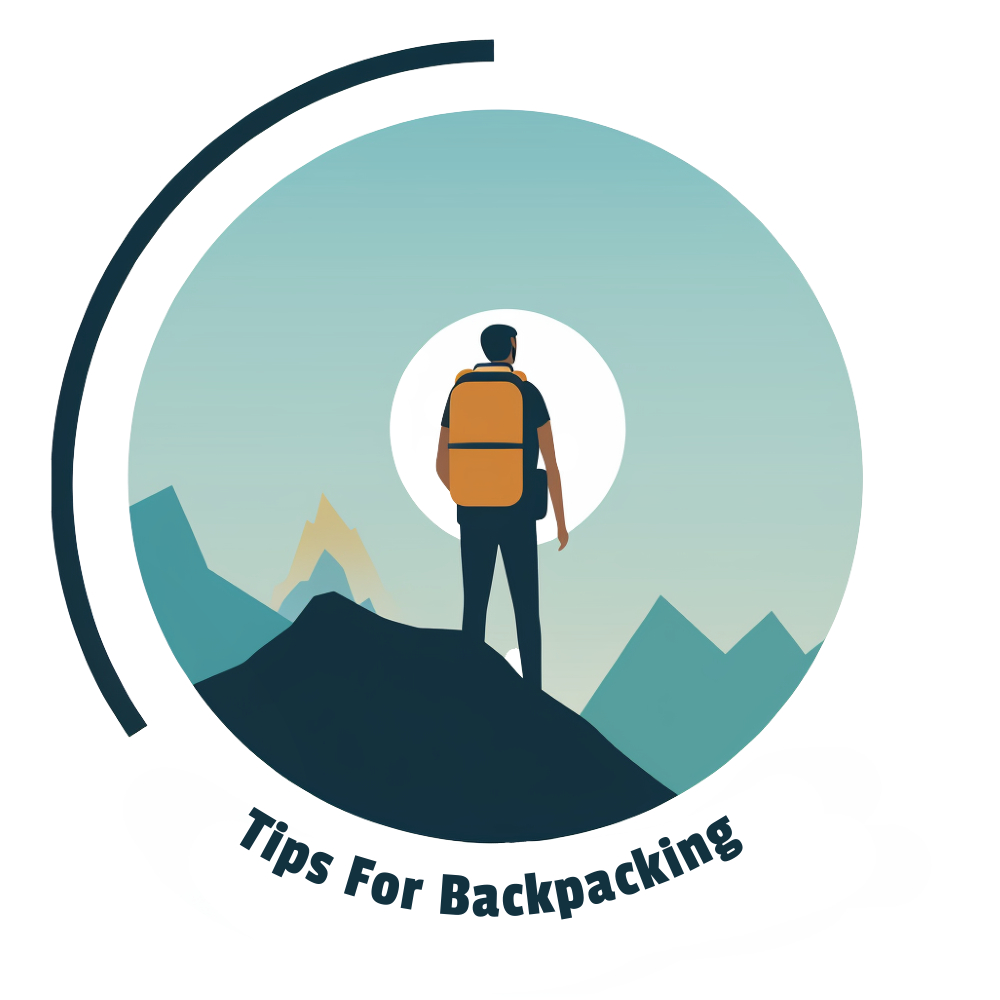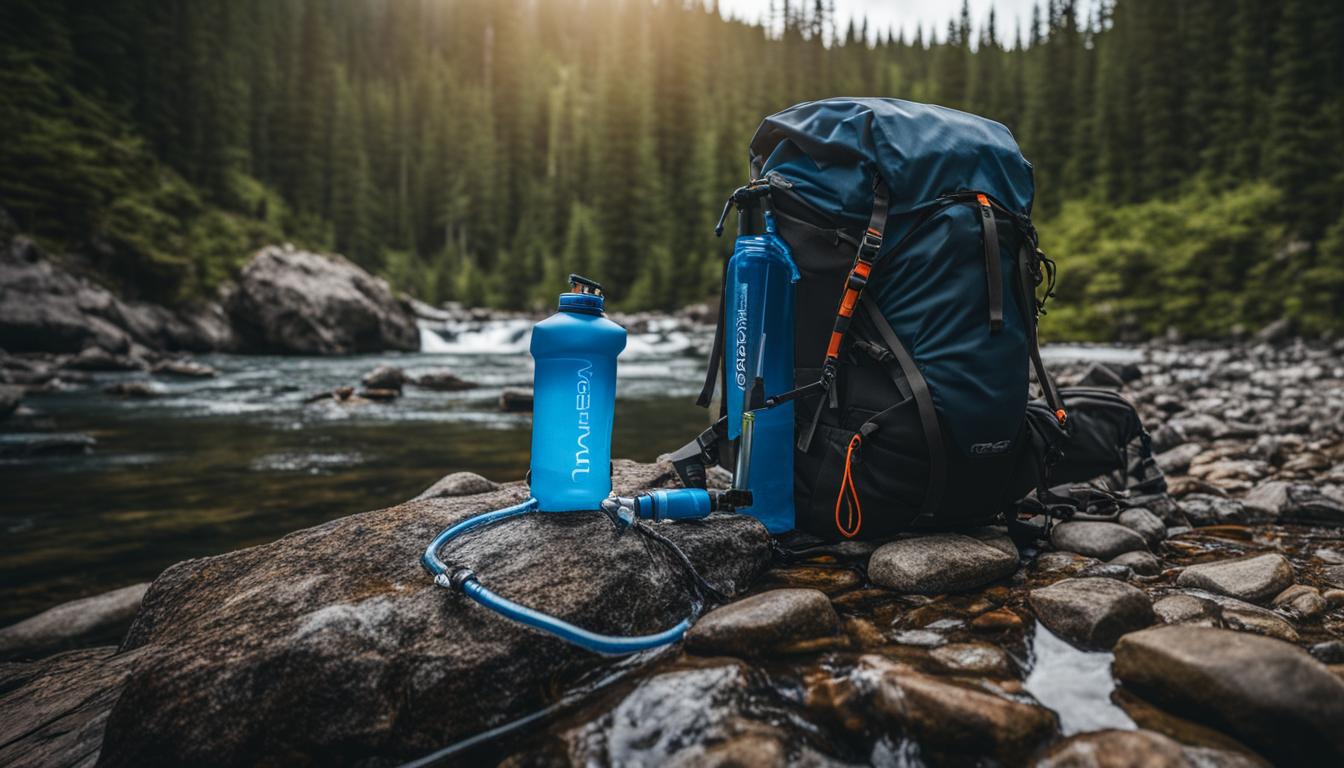Water is a crucial element to consider when going on a backpacking trip. It is essential to understand your water requirements based on climate and route, as well as how to carry and treat water to ensure your hydration needs are met. Planning your water supply and knowing where to find information about water sources along the trail are key factors.
The amount of water you should carry depends on various factors such as temperature, humidity, elevation, and your sweat rate. There are different methods for carrying water while backpacking, including water bottles, hydration bladders, and soft flasks. Additionally, having a method to filter or treat water is important to ensure its safety for consumption.
Key Takeaways:
- Understand your water requirements based on climate and route.
- Plan your water supply and know where to find water sources along the trail.
- Consider temperature, humidity, elevation, and sweat rate when determining the amount of water to carry.
- Choose the appropriate method for carrying water, such as bottles, bladders, or soft flasks.
- Ensure the safety of your water by filtering or treating it before consumption.
Tips for Carrying and Storing Water

When it comes to backpacking trips, proper hydration is essential for staying healthy and energized on the trail. Having a well-thought-out water carrying and storage plan can make a significant difference in optimizing your water management. Here are some tips for carrying and storing water efficiently:
1. Plan Your Water Carry
Before heading out on your backpacking trip, research and identify water sources along your route. Estimate the distance between each water source and plan your refill locations accordingly. This will help ensure you have enough water to last between each fill-up point. Remember to consider factors such as temperature, humidity, elevation, and the intensity of your hike when calculating your water requirements.
2. Choose the Right Water Carrying Method
There are various options for carrying water while backpacking, including water bottles, hydration bladders, and soft flasks. Each method has its pros and cons, so it’s crucial to choose one that works best for your needs. Consider factors such as weight, ease of access, durability, and compatibility with your backpacking gear. Test different methods before your trip to find the one that suits you best.
3. Optimize Your Water Storage
When it comes to water storage, there are popular options such as hard-sided plastic bottles or collapsible bottles. These options are lightweight and easy to pack. Another alternative is using hydration reservoirs, which fit into specially designed backpack pockets. Whichever method you choose, make sure it is easily accessible and doesn’t add unnecessary weight to your pack.
Remember, staying hydrated is crucial on the trail, so make sure to drink water regularly while hiking. Additionally, properly hydrate before and after your hike to help your body recover. By planning your water carry, choosing the right water carrying method, and optimizing your water storage, you can ensure efficient water management during your backpacking trip.
What are the Best Methods for Managing and Treating Water on Backpacking Trips?
When it comes to tips for backpacking water sourcing, there are a few key methods to consider. Some backpackers prefer to use water purification tablets or a portable water filter to ensure safe drinking water. Others may choose to boil water or use a UV water purifier. It’s essential to plan ahead and research the best method for the specific backpacking trip.
Importance of Water Filtration and Treatment
When it comes to backpacking trips, managing your hydration is of utmost importance. That’s why it’s crucial to have a reliable method for filtering and treating water to ensure your safety and well-being on the trail. Even in seemingly clean water sources, there can be microscopic threats like giardia that can cause severe illness if ingested.
There are several options available for water filtration and treatment. Inline filters, such as those used with water bottles or bladders, treat the water as you drink it, making them convenient and easy to use. Gravity or squeeze filters, on the other hand, allow you to filter water at the source and are perfect for larger volumes. If you encounter very turbid water, pump filters can effectively remove sediment, although they can be heavy and slow. Alternatively, chemical or UV treatments can be used to treat water without removing sediment, but they may not be as effective in filtering contaminants.
Choosing the right water treatment method depends on the water quality you expect to encounter on the trail and the compatibility with your hydration system. It’s essential to consider factors such as ease of use, effectiveness, and weight when making your decision. Additionally, proper maintenance and cleaning of your filters or treatment systems are necessary to ensure their long-term effectiveness.
So, whether it’s a weekend getaway or a multi-day adventure, don’t compromise on your water filtration and treatment. With expert advice on managing hydration on backpacking trips and these top tips for carrying and storing water, you’ll stay safe, healthy, and properly hydrated throughout your journey.

